No článek pěkný, až na ty ráže, C 96 byla v ráži 7,63x25 Mauser
a Tokarev 7,62x25 Tokarev
no a na 30 m bych se nepostavil ani jedné pistoli co tu je vyobrazena, snad na 100m a ještě ze strachem....
Radom a Tokarev 33 jsou kopie Coltu 1911
Waffen - SS: weapons and armament
Categories: Wars
The Waffen-SS, which did not differ from the other units in terms of their weapons and equipment, eventually turned into a fighting forceto which the German arms industry supplied the most sophisticated combat equipment it could produce. Especially the elite SS tank divisions could boast the best tanks and combat vehicles in Germany.
Apart from a few daggers and sabres, virtually no weapons were developed or produced for the Wafenn-SS. They did not differ from those used by the Wehrmacht, but on the other hand there were a certain number of weapons, especially light foreignwith which the Waffen-SS had to arm themselves, unlike the army, because the latter denied Himmler's elite the supply of sufficient weapons of domestic manufacture.
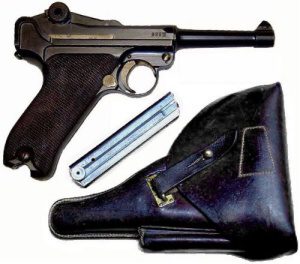
Perhaps one of the most famous German firearms of all time was the 08 pistol, which the Germans officially called theP08, but came to be known around the world as the "Luger", after Georg Luger, from whose design office it originated. This highly rated and versatile weapon was offered by the manufacturer in several designs: with a barrel length of four, six or eight inches, with or without a wooden shoulder rest. Even the standard eight-round magazine in the stock could be replaced by a drum magazine at the customer's request. The ammunition was 9 mm calibre of the "parabellum" type. The bullet left the muzzle at a velocity of approximately 350 metres per second and the effective range was, as with most other weapons of this category, something around 30 metres. It was a very high quality weapon, but on the other hand somewhat oversized, which made it not always the most suitable for the harsh conditions of the first line, where there was not always enough quality ammunition, and with the substitute, it liked to jam. It also occasionally failed when a soldier accidentally left it on the ground.Although there were strong tendencies to replace it with another weapon before the outbreak of World War II, it was produced until 1942 and, due to its popularity, served in many places throughout the war.
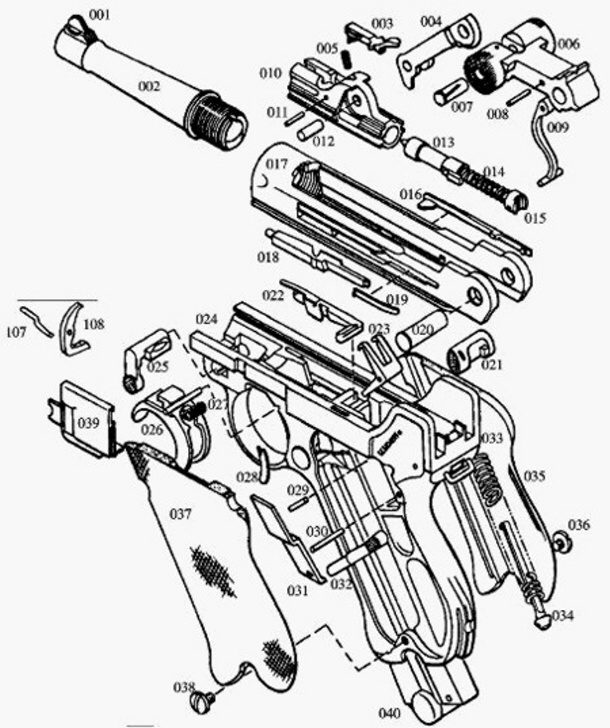
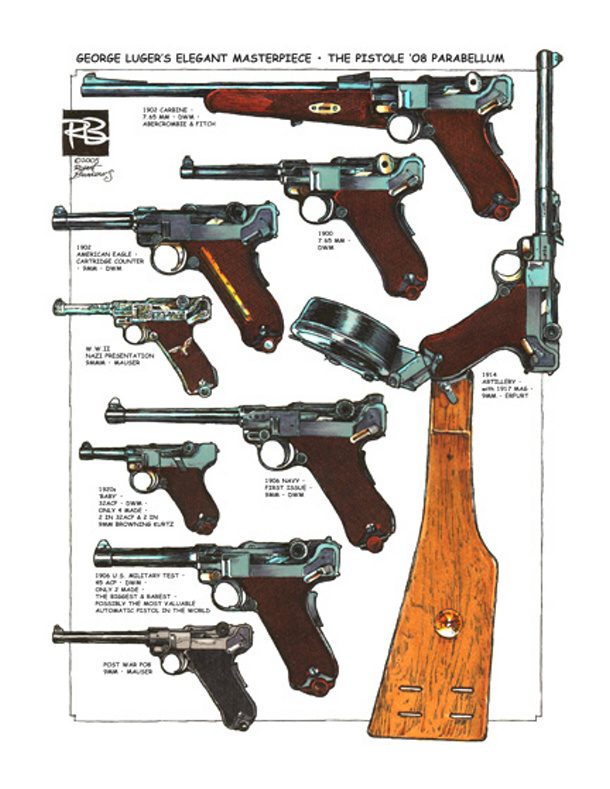
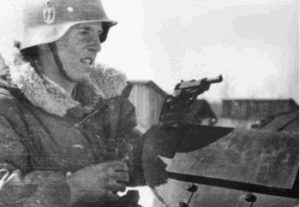
The handgun was later replaced in the arsenal by the Walther-made P38 pistol. Compared to its predecessor it was more robust, but at 0.98 kg it was also heavier. It was also equipped with an eight-round chambered magazine for 9 mm "parabellum" ammunition. It did not differ from the P08 in muzzle velocity. It was a mechanically durable, very popular weapon due to its easier maintenance, also much more suitable for field conditions than the P08. The Waffen-SS used it extensively. It was such a success that in 1957 it was reintroduced into the West German army under the designation P1.
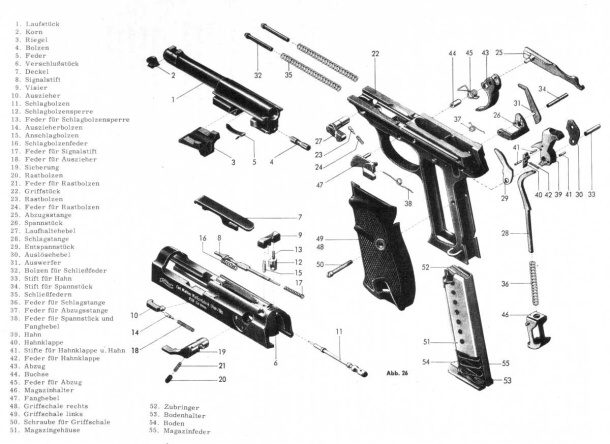
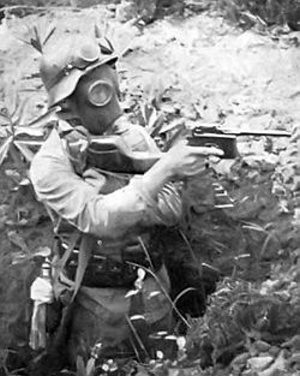
Perhaps the most unusual weapon that Waffen-SS used during World War II was the Mauser C96, which was called the "broom handle" because of its characteristic circular handle. The magazine of this large heavy handgun was mounted just in front of the trigger guard. Like most other rifle magazines, it was loaded by means of a retractable grip. The gun was available with a 7.65 or 9 mm barrel bore and some versions were automatic. One particularly interesting aspect of this gun was the wooden holster, which could be used to extend the shoulder stock to double its length. With this addition, the C96 achieved quite respectable accuracy in the hands of a capable shooter. Its size and cumbersomeness did not detract from its popularity.
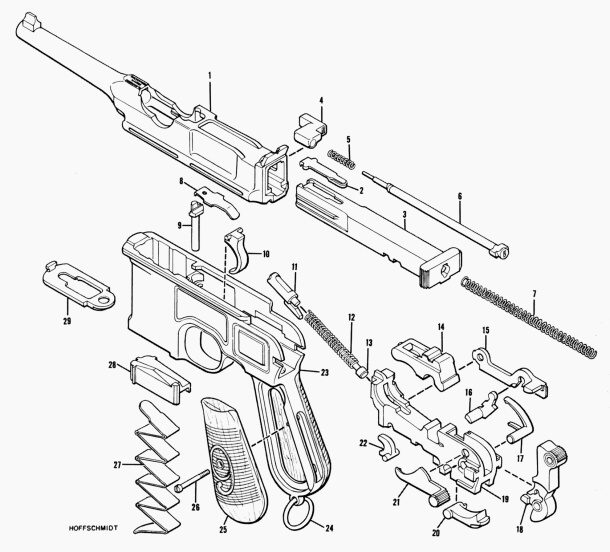
The above weapons were very popular and effective. They were used mainly by non-commissioned officers and soldiers of lower ranks. Officers preferred more compact weapons, which were also used by tank crews and other armoured vehicles.as they found their small size useful in the cramped conditions of these combat vehicles. The three most common weapons in this category were the Walter PP and PPK, the Mauser HSc.
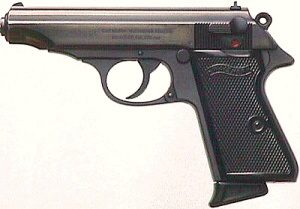 The Walter PP (police pistol) was produced in two variants: with a 7.65 or 9 mm barrel. It was compact in size and shape with a 9mm barrel and octagonal magazine in the stock. The muzzle velocity was 289 m/s. The effective range was around 30 metres. With its small size and easy concealability, it was a weapon favoured by police officers and members of other security services.
The Walter PP (police pistol) was produced in two variants: with a 7.65 or 9 mm barrel. It was compact in size and shape with a 9mm barrel and octagonal magazine in the stock. The muzzle velocity was 289 m/s. The effective range was around 30 metres. With its small size and easy concealability, it was a weapon favoured by police officers and members of other security services.
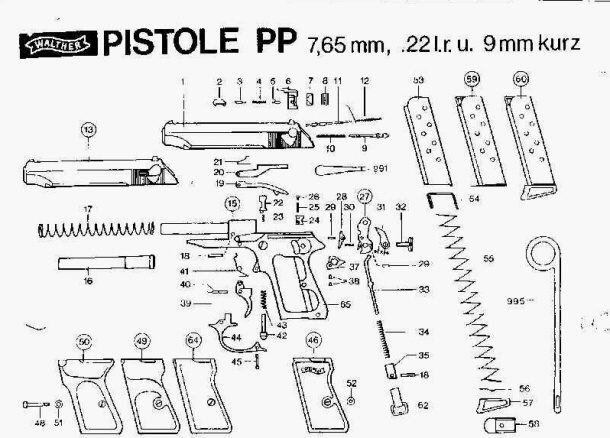
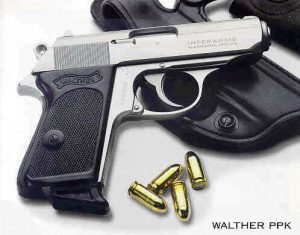
The Walter PPK pistol had the same characteristics, except for the barrel, which measured only 86 mm, and the magazine, which held only seven rounds. Looking back from its somewhat smaller dimensions, it was very similar in appearance to the PP.
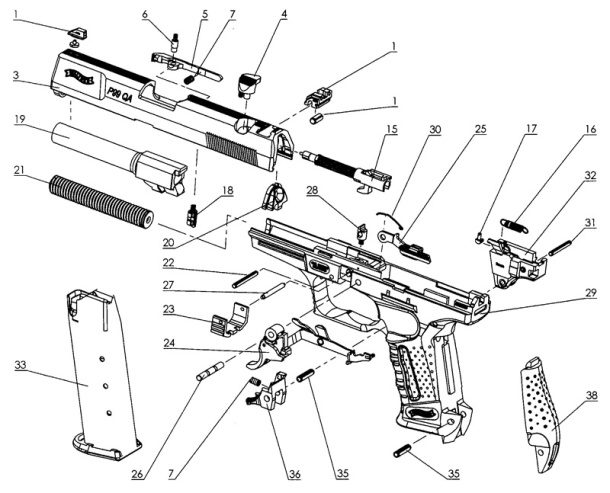
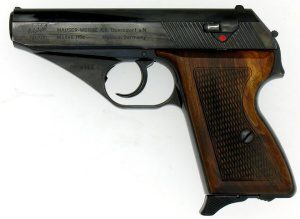
The Mauser HSc pistol was manufactured in 7.65 mm calibre with 85 mm long barrel and octagonal magazine and grip. As a weapon that looked more modern and stylish compared to the Walter models, it was also popular with many officers. All three of these handguns (Walter PP and PPK, Mauser HSc) were suitable for field conditions due to their ease of use.
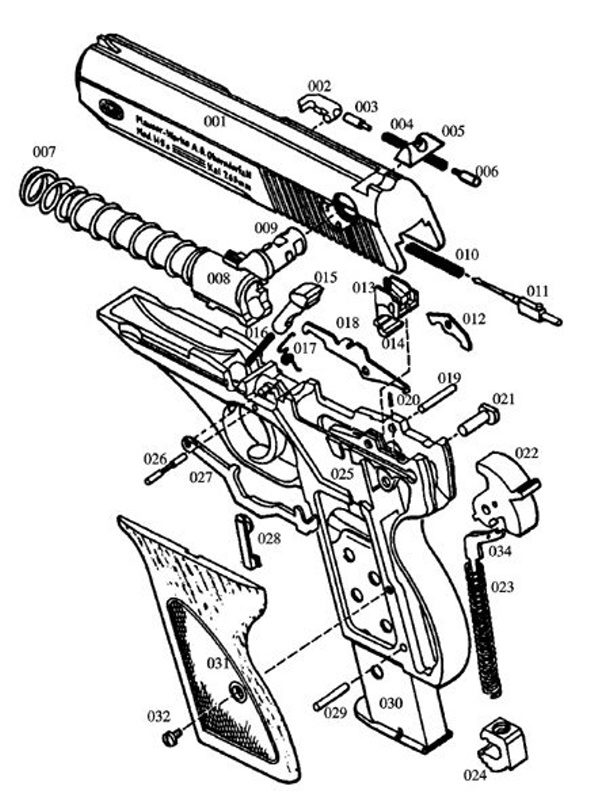
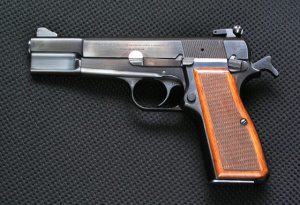
In addition to weapons of German manufacture, the Waffen-SS also used some captured foreign weapons. Among them, the most popular was the 9 mm Browning High Power automatic pistol with a 13-round magazine in the grip. It was manufactured in Belgium by the Fabrique Nationale and after the occupation of the country in 1940, the Germans took over its production. Many of these guns went from the factory to Waffen-SS armories. However, some of them were not reliable as they were damaged by Belgian saboteurs before shipment.
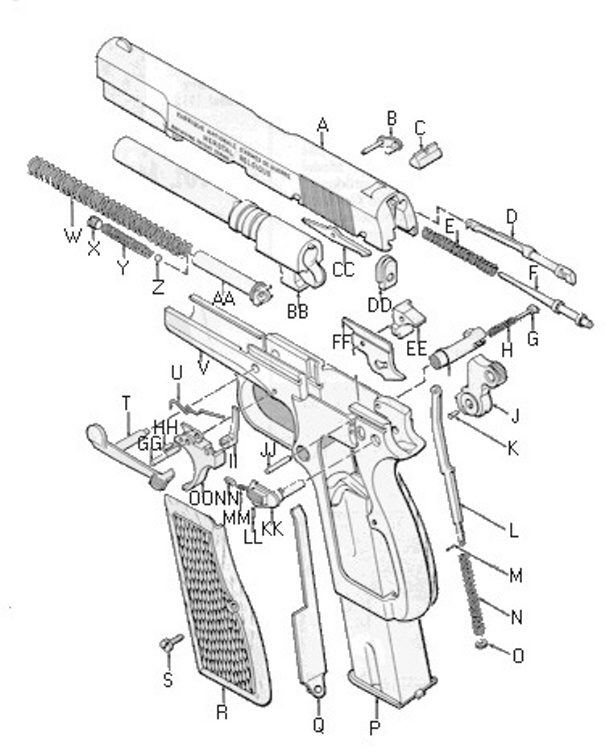
The Browning was similar in appearance to the Czech CZ38 and the Polish Radom, both 9 mm automatic pistols.
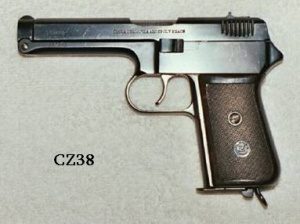
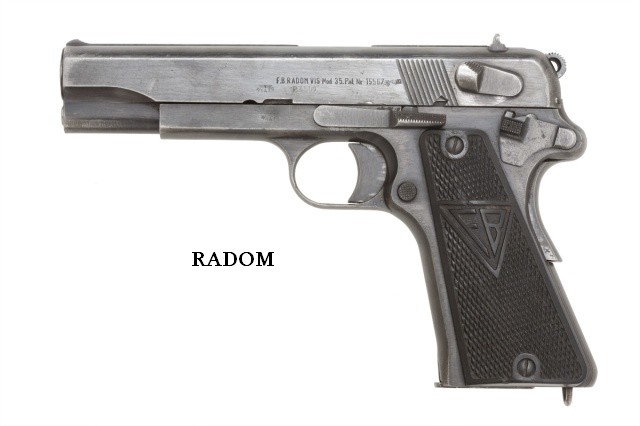
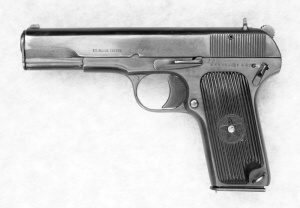
The favourite trophy of German soldiers serving on the Eastern Front was the octagonal automatic pistol of 7.65 mm Tokarev calibre.
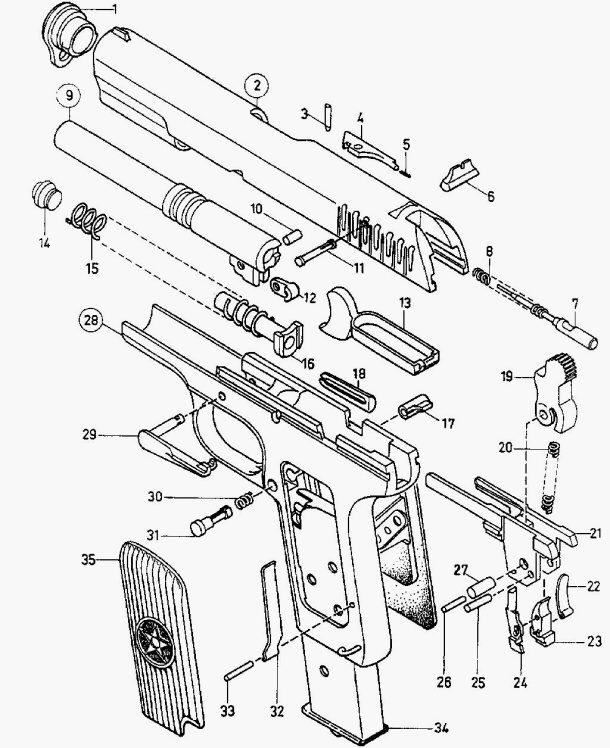
Continued next time...
Williamson, G. : SS - Hitler's instrument of terror
You can search for WW2 artefacts using our metal detectors.
The article is included in categories:
Post
jj máš pravdu s těmi rážemi, ale zdroj uvádí jen ty, které nejvíce používala waffen SS, nevím jestli mezi ně patří ráže 25 u Mauser a Tokarev
... docela bych chtěl vidět tu P08 s délkou hlavně 8 stop jak píše autor :o) tím by se dalo trefit i na kilometr :o)
tak to uvádí zdroj :( ještě to ověřím
U těch pistolí bych možná místo termínu "automatická" použil "poloautomatická" - automatická zbraň je podlě mě schopná střelby dávkou. I to přirovnání CZ38 k Browningu není moc šťastné, česká pistole je systému DAO a je to na první pohled patrné.
A nešlo by ještě editovat text a opravit ty osmihranné pistole a zásobníky? Myslím že při psaní nechtěně zapracovala automatická kontrola pravopisu.
Jinak pěkný článek, piš dál, těším se!
to nebyly určitě stopy, ale palce; mj. ten Walter - není to náhodou pistole Jamese Bonda?
Walther PPK - ano, tou střílel Bond. James Bond.
to vox: díky, určitě jsou to palce :) ale teda taková drahá bichle a hrubek tam :(
Chci jen dodat že za držení pistole PARABELLUM P08 byl po II. válce trest smrti. Přesnost střelby a smrtící účinek se odhadoval na několik set metrů. Mám to ze vzpomínání mého děda který byl prvorepublikový četník a sloužil i za války kdy málem přišel o život při likvidaci celé četnické stanice jednotkou SS. Byly s kolegou zrovna na obchůzce a když se vrátily tak četnická stanice byla vypálena, 3 kolegové popraveni na místě. 










